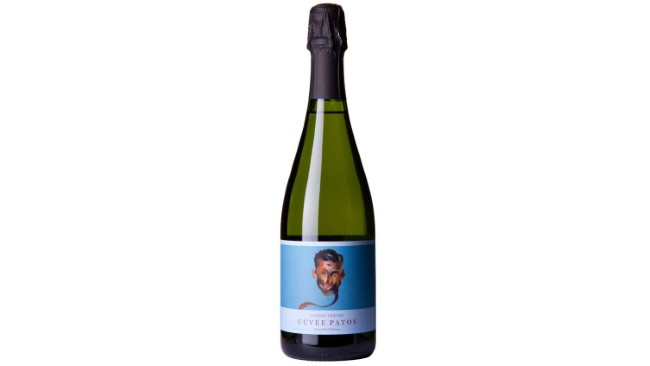Tasting: Two PATOS Natural Wines from Musician Sondre Lerche
Photos via Sondre Lerche, Castell D'Age
Diving back through Paste’s voluminous back catalog of music writing, I can see at a glance that the first feature we wrote on Norwegian singer-songwriter Sondre Lerche was published all the way back in 2004, when the musician was only 22 years old. In the nearly two decades that have followed, we’ve recorded Lerche whenever we’ve gotten the chance, whether it’s studio sessions, festival sets, or even a mid-pandemic podcast appearance with Paste editor Josh Jackson. But it’s not until now that Lerche has given us a means of intoxication, rather than simply food for thought.
The exceedingly prolific songwriter, whose 10th studio album Avatars of Love drops in stores on April 1, 2022, has segued into the world of natural wine with two thoughtful new releases for the American market under the brand name PATOS. Named for the Norwegian word for “pathos,” Lerche conceived PATOS as a reflection of his passions beyond the realm of music; another artistic offering to the world as he now approaches his 40th birthday.
To produce PATOS, Lerche teamed up with “longtime biodynamic, family run wine producer Castell d’Age” of Catalonia, Spain. These are organic, natural wines, and you can learn more about the actual definition of those terms and words like “biodynamic” by reading our recent piece on the definitions of Green Wine marketing terminology. Suffice to say, these two releases, titled PATOS Luz y Luz and Cuvée PATOS are made with rustic, traditional methods. They’re currently being sold via specialty shops in the New York City area, with an upcoming expansion into Los Angeles, but are also available online.
So with that said, let’s pop some tops and do a little tasting.
PATOS Luz y LuzMSRP: $23
Luz y Luz is a Spanish rosé made from Garnacha (Grenache) grapes grown in Catalonia. As we’ve written about recently, Grenache is a particularly eclectic and versatile grape, being capable of producing both full-bodied, intense red wines or delicate, lighter-hued wines of more contemplative character. It’s a very different grape when grown in a variety of climates and locales, as our recent tasting of Paso Robles, California Grenaches will illustrate. In Spain, it’s used as both part of blends and to produce varietal wines known as Garnacha, which are quite popular. Here, though, it’s been used in service of a particularly juicy and fruit-forward rosé.
On the nose, Luz y Luz puts out juicy and slightly sweet impressions of strawberry, plum and grape, with darker fruit notes than one might expect out of your average rosé profile. The fruit has a jammy quality almost verging on cooked or stewed at times, although on the palate things are brighter and lighter, with more impressions of strawberry and plum. Here on the palate, things are drier than the nose initially suggests, lending the Luz y Luz a refreshing nature only reinforced by a twist of orange citrus and slightly dried herb-like complexity. I generally don’t drink a lot of rosé, but this one features enough to keep me engaged through an entire glass.
Cuvée PATOSMSRP: $24
Cuvée PATOS is a Cava, often explained casually as Spain’s answer to champagne, but assuredly a category all its own even if some of the production methods are the same. This one hails from an estate owned and operated by three generations of women winemakers, and is made with three classic Spanish varietals used for Cava: Macabeu, Xarel-lo, and Parellada. Cava can only be produced in a few small regions, making this bottle emblematic of the winemaking traditions of Catalonia in particular.
On the nose, Cuvée PATOS suggests both slightly indulgent fruit notes and a certain minerality—I’m getting light impressions of peaches and cream, along with Golden Delicious apple skins. On the palate, the golden apple flesh is definitely there, along with lemon zest and pleasing minerality that gives it a bit of structure. Moderate acidity gives Cuvée PATOS a bright, slightly tart vivaciousness. This feels like a warm weather, outdoorsy sort of sparkling wine to me, and it makes me wish I was sampling it at a cafe in Barcelona. Or at a Sondre Lerche concert. Either way.
Going forward, we’d love to see more releases under the PATOS banner—maybe a full-on red wine from Garnacha, Carignan or Tempranillo? We’ll just have to wait and see what Lerche has in store.
Jim Vorel is a Paste staff writer and resident beer and liquor geek. You can follow him on Twitter for more drink writing.

